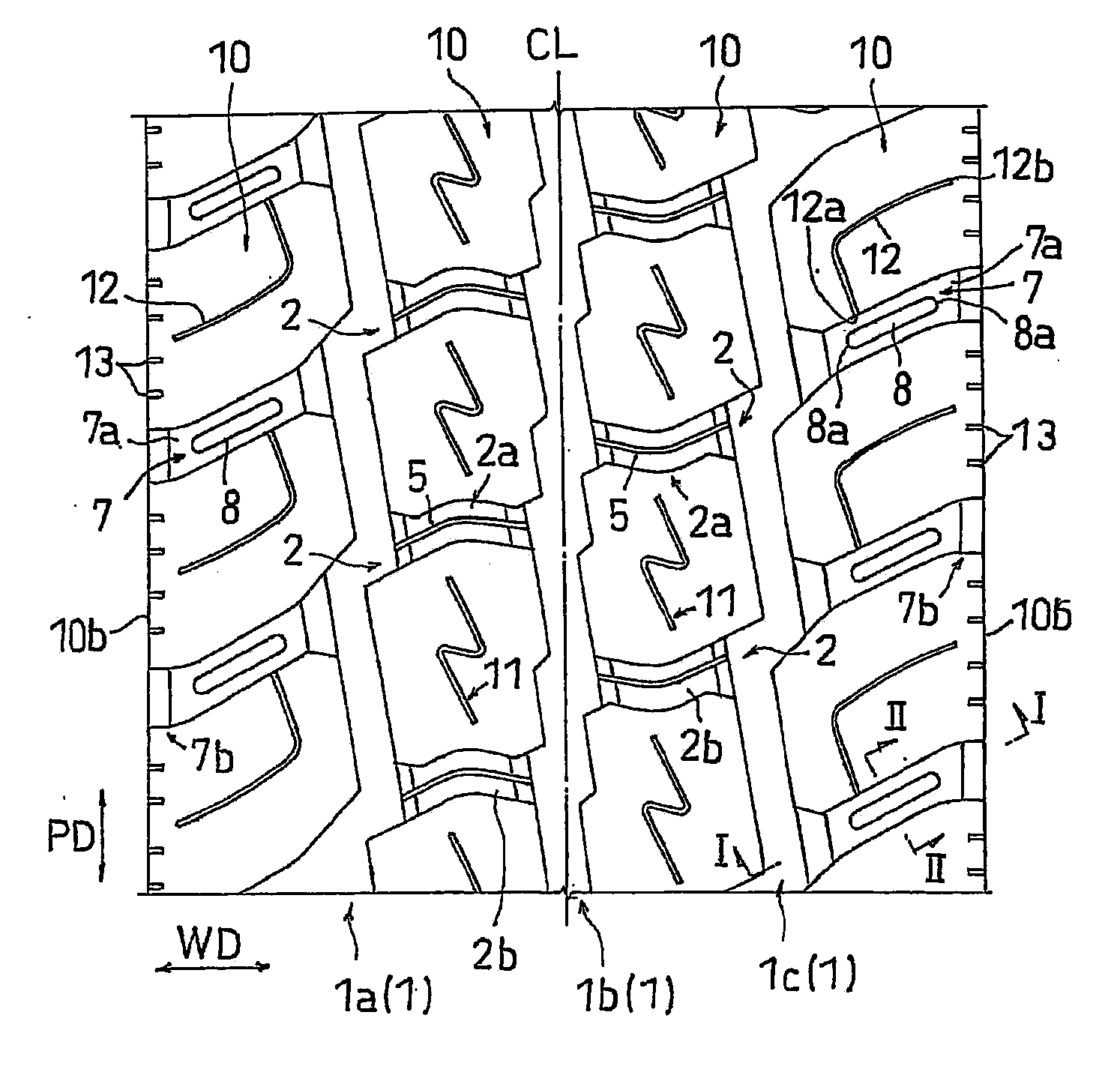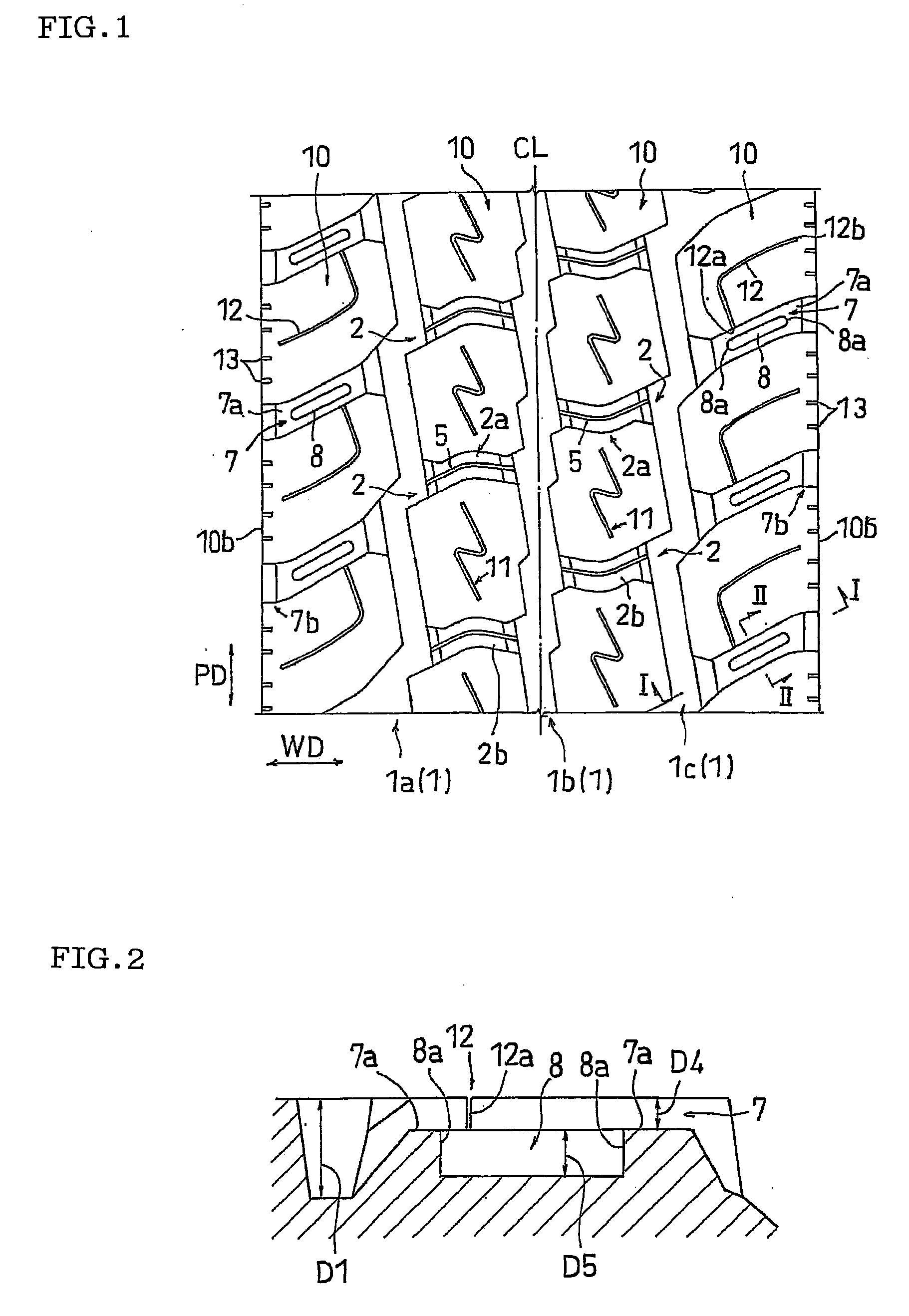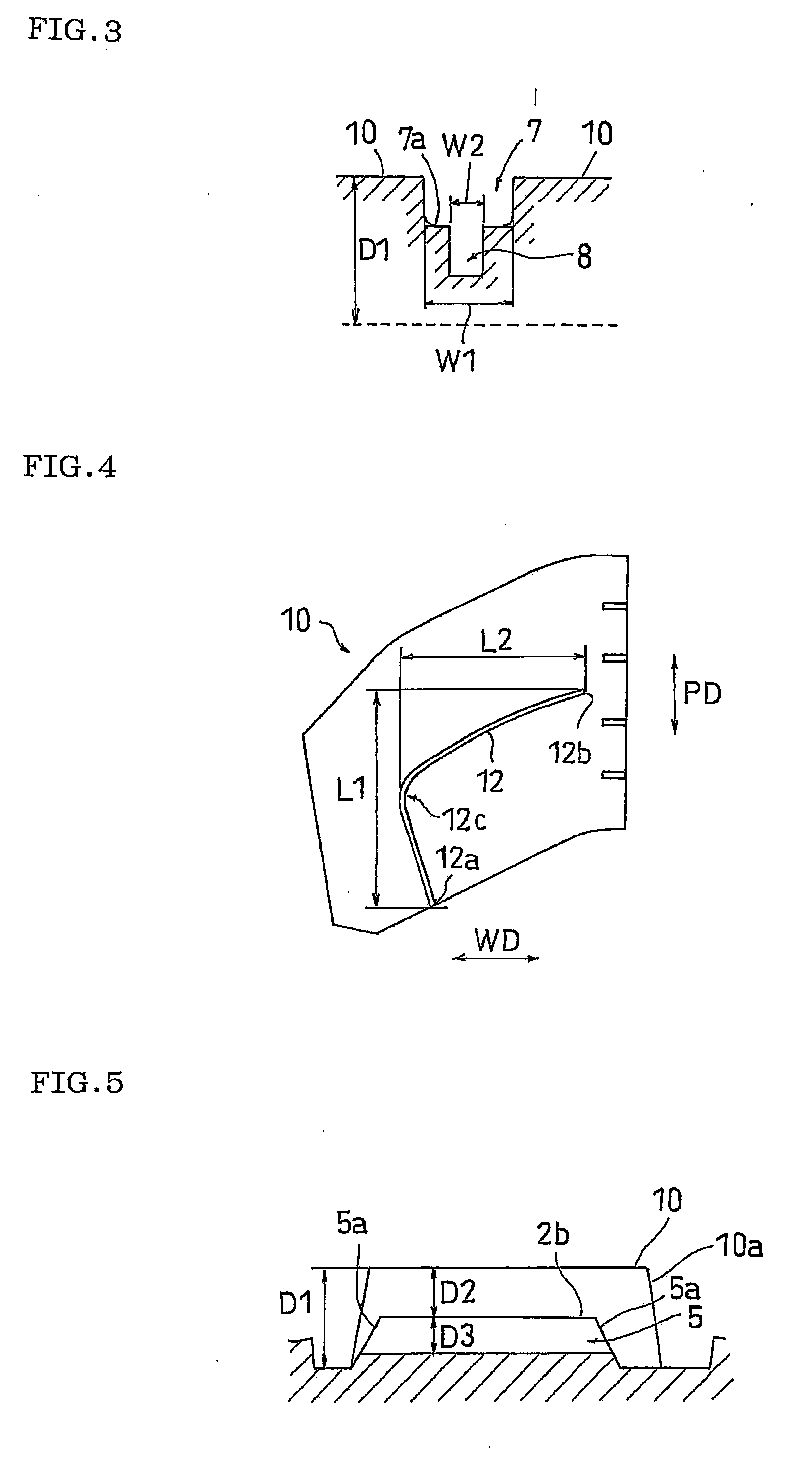Pneumatic tire
a technology of pneumatic tires and cylinders, applied in the field of pneumatic tires, can solve the problems of easy occurrence of toe and heel wear, increased block deformation, etc., and achieves the effect of suppressing the deformation against action force upon evolution, sufficient edge effect, and easy maintenan
- Summary
- Abstract
- Description
- Claims
- Application Information
AI Technical Summary
Benefits of technology
Problems solved by technology
Method used
Image
Examples
example 1
[0076]A radial tire having a size of 195 / 85R16 was produced by adjusting the depth of the circumferential groove 1 to 12 mm, and the groove width to 8.5 mm; the depth of the lateral groove 7 to 4.0 mm, the groove width to 6 mm and the length of the groove bottom to 5.8 mm; the depth of the groove bottom concave portion to 2.0 mm, the width to 2.0 mm and the length to 12 mm; the depth of the land portion sipe 12 to 6.5 mm, the groove width to 0.6 mm, L1=22 mm and L2=24 mm; the depth of the lateral groove 2 to 6 mm, the groove width to 6 mm and the curvature radius of the bend section to 10 mm; the size of the block on a median side to approximately 34 mm×34 mm; the depth of the groove bottom sipe 5 to 1.5 mm and the groove width to 0.6 mm; the depth of the land portion sipe 11 to 6.5 mm, the groove width to 0.6 mm, the circumferential length to 20 mm and the widthwise length to 7.5 mm in the tread pattern shown in FIG. 1. The evaluation results on respective performance of the tire w...
example 2
[0077]A radial tire was produced in the same manner as in Example 1 except for forming a groove bottom concave portion (rectangular shape) having a depth of 3 mm, width of 2.5 mm and length of 18 mm. The evaluation results on respective performance of the tire will be shown in Table 1.
example 3
[0078]A radial tire was produced in the same manner as in Example 1 except for forming a groove bottom concave portion (the shape is shown in FIG. 6(a)) having a depth of 1.5 mm, width of 1.5 mm and length of 5 mm. The evaluation results on respective performance of the tire will be shown in Table 1.
PUM
 Login to View More
Login to View More Abstract
Description
Claims
Application Information
 Login to View More
Login to View More - R&D
- Intellectual Property
- Life Sciences
- Materials
- Tech Scout
- Unparalleled Data Quality
- Higher Quality Content
- 60% Fewer Hallucinations
Browse by: Latest US Patents, China's latest patents, Technical Efficacy Thesaurus, Application Domain, Technology Topic, Popular Technical Reports.
© 2025 PatSnap. All rights reserved.Legal|Privacy policy|Modern Slavery Act Transparency Statement|Sitemap|About US| Contact US: help@patsnap.com



